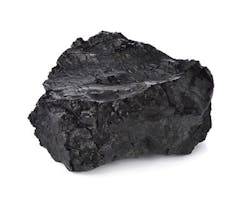No Liquid, No Problem
About the author: William Heins is general manager for thermal products at GE’s Water & Process Technologies. Heins can be reached at [email protected] or 425.629.1330.
Power consumption growth is slowing in China, and while the country is investing in renewable energy, it also is exploring technology to make coal-fired power more effective at meeting discharge regulations. To lower air pollution, the Hebei Zhuozhou Jingyuan Thermal Power Plant Co. Ltd., a division of China’s state-owned Jingneng Group, has launched an initiative to relocate high-pollution plants out of Beijing’s urban areas. As a result, the 800 MW Shijingshan Power Plant was decommissioned in March 2015 and plans for the brand new 2 by 350 MW Jingneng Zhuozhou coal-fired power plant in Zhuozhou City were announced.
China is facing long-term water scarcity and environmental challenges. New thermal power plants are subject to strict emission and discharge limitations for nitrogen oxides, sulphuric dioxide, smoke emissions and mercury. They also are required to achieve zero liquid discharge (ZLD) of flue gas desulfurization (FGD) wastewater as a condition of environmental impact assessment approvals. In achieving ZLD, facilities produce purified industrial salt, which must meet a specific chemical composition (see Table 1). To meet these requirements, Hebei Zhuozhou Jingyuan Thermal Power Plant Co. Ltd. turned to GE’s Water & Process Technologies for a complete wastewater treatment solution for its Jingneng Zhuozhou coal-fired power plant.
Staging the Process
FGD wastewater chemistry varies widely and is determined by a number of factors, including type of coal, variability of coal feedstock, the source of makeup water, and the loading of the electrical generating units over time. For this reason, GE assessed all the above factors before developing a system to enable 99% reuse of the plant’s FGD blowdown wastewater as makeup water.
Accommodating 92.5 gpm, the designed system (see Figure 1, page 17) commences with three stages of physical-chemical pre-treatment to optimize wastewater for further treatment. Lime is added to precipitate most of the metals as hydroxides and to precipitate any excess dissolved sulfate; ferric chloride is added to co-precipitate residual heavy metals; and pH is adjusted.
Suspended solids removal is accomplished in the third stage, ultrafiltration, which protects the downstream systems in times of process upset. The pumped, treated wastewater stream is monitored for turbidity and pH, and acid feed is provided should final pH adjustment be required prior to discharge to the impoundment well.
Solids Disposal
The next step is weak acid cation (WAC), which uses ion exchange resins for hardness removal (Ca+2 and Mg+2). All gypsum solids, metal hydroxides, sulfides, and any other solids removed by sedimentation and filtration from these first few steps are collected in the clarifiers and transferred to the wastewater thickener. Thickened sludge is removed from the thickener by pumps, dewatered and disposed.
After WAC, nanofiltration (NF), a pressure-driven membrane process, bridges the gap between ultrafiltration and reverse osmosis (RO), providing divalent cation removal. NF reject is recycled back to the upstream pre-treatment system, while NF permeate is further concentrated in the RO system.
RO pre-concentrates FGD blowdown prior to thermal ZLD treatment. RO permeate (21.22~27.25 m3/hour) is sent on to cooling towers for reuse while RO reject (4.8 m3/hour) is sent to a thermocompressor (TVR)-driven forced circulation crystallizer, the workhorse of the GE ZLD solution (see Figure 2, page 18).
Evaporation Elimination
The concentrate enters the feed tank and is pumped through a distillate heat exchanger. The heat exchanger heats the feed water using waste heat from the evaporator distillate. The heated feed is sprayed through the deaerator nozzle onto the packing surface and countercurrent flowing steam contacts the falling liquid feed and strips out non-condensable gases (i.e. dioxide and carbon dioxide). The stripped gases and steam are vented to the atmosphere, enhancing the evaporation process. Crystals are continuously formed within the brine slurry in the vapor body. As a result of the heating and flashing of the brine, water is removed in the form of vapor. The brine becomes supersaturated and the salts precipitate from solution. A slip stream from the recirculating brine is directed to a dewatering device to remove the precipitated solids. The solids are discharged, sent to a dryer and packing system, and utilized within Jingneng Group. The liquid removed from the solids is directed to the centrate tank and reprocessed in the crystallizer. Distillate combines with RO permeate as product water for reuse in the plant.
Solid Solution
An integrated approach to wastewater treatment can yield a number of advantages for ZLD power plants when compared to conventional, segregated methods. For the Jingneng Zhuozhou coal-fired power plant in Zhuozhou City, GE’s ZLD solution will enable the reuse of 99% of the FGD blowdown wastewater (see Table 2) and produce approximately 10.5 tons per day of purified industrial salt that can be sold for profit.
The system, expected to begin commercial operation in late spring 2017, will serve as a demonstration ZLD power plant for the country.


